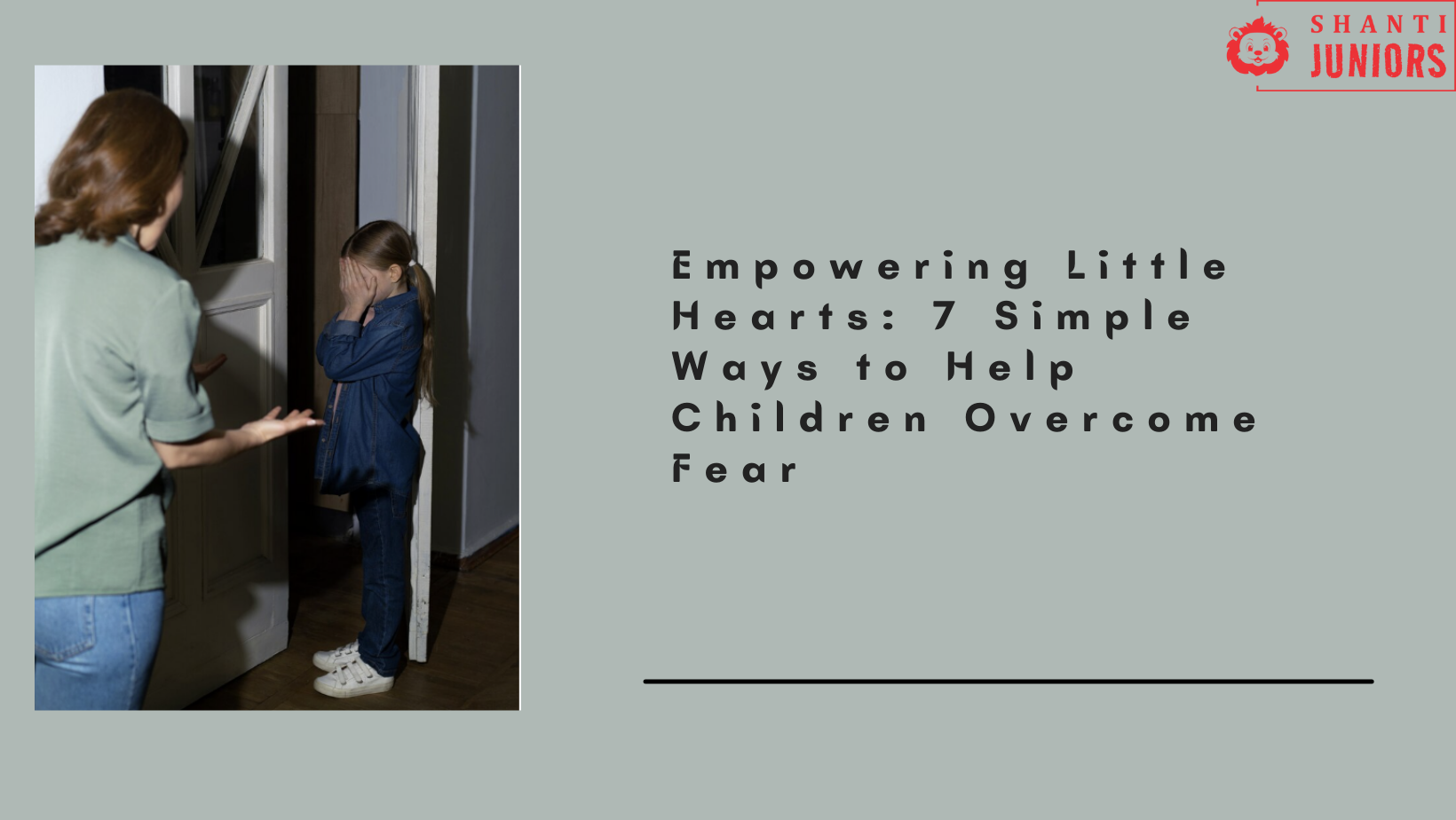

Fear is a natural part of childhood, but as parents and caregivers, our role is to guide and support our children as they navigate these emotions. In this blog, we'll explore seven simple yet effective ways to help children overcome fear, empowering them to face challenges with courage and resilience.
Introduction:
Fear is a natural part of childhood, but as parents and caregivers, our role is to guide and support our children as they navigate these emotions. In this blog, we'll explore seven simple yet effective ways to help children overcome fear, empowering them to face challenges with courage and resilience.
1. Create a Safe and Open Environment: The foundation for overcoming fear is a sense of safety. Foster an open environment where children feel comfortable expressing their feelings without judgment. Knowing they can share their fears without fear of reprimand creates a safe space for emotional exploration.
2. Validate Their Feelings: Validate your child's feelings by acknowledging that it's okay to be scared. Avoid dismissing their fears or telling them not to be afraid. Instead, empathize with phrases like "I understand that this is scary for you" or "It's okay to feel this way."
3. Encourage Communication: Encourage open communication by asking gentle questions about their fears. Prompt them to share what specifically frightens them and why. Understanding the root of their fear allows you to address it more effectively and tailor your support to their needs.
Also Read: Top 8 Strategies to Increase Enrollment in School
4. Introduce Mindfulness and Relaxation Techniques: Teach simple mindfulness and relaxation techniques to help children manage anxiety. Deep breathing exercises, visualization, or even simple yoga poses can be effective tools for calming the mind and body. Practice these techniques together during calm moments to make them familiar and accessible during times of fear.
5. Gradual Exposure: Introduce a concept known as gradual exposure to help children face their fears in manageable steps. Break down the feared situation or object into smaller, less intimidating parts. Gradually increasing exposure over time helps build confidence and reduces anxiety.
6. Use Positive Reinforcement: Positive reinforcement is a powerful tool in helping children overcome fear. Acknowledge and praise their efforts, no matter how small. Celebrate their courage in facing fears, and provide reassurance that you are proud of them. This positive feedback fosters a sense of accomplishment and self-assurance.
7. Be a Role Model: Children often learn by example, so be a positive role model when it comes to facing fears. Share stories from your own experiences, emphasizing the importance of courage and resilience. When children witness your ability to confront challenges, it encourages them to do the same.
Conclusion:
Helping children overcome fear is a delicate and ongoing process that requires patience, empathy, and a supportive environment. By creating a safe space for open communication, validating their feelings, and introducing practical techniques, you equip them with the tools needed to navigate and conquer their fears. Remember, every child is unique, and the journey to overcoming fear is a gradual one. With your unwavering support, children can develop the confidence and resilience needed to face the uncertainties that life may bring.